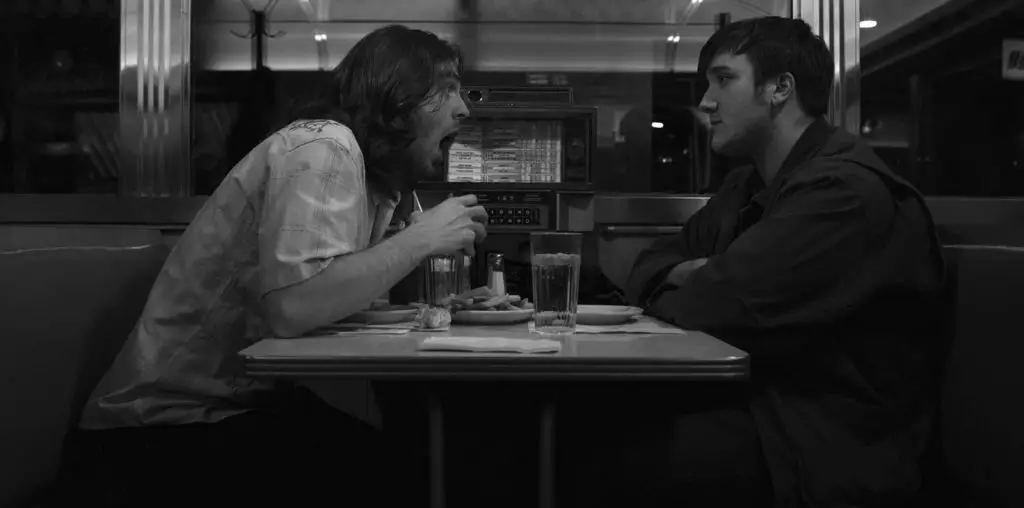
“Malevolence” is a very frightening film that takes on many difficult aspects of the horror genre and tackles them head on. Incorporating mythologies from films like “Friday the 13th”, “The Texas Chainsaw Massacre”, and “Halloween”, Stevan Mena makes some dramatic and artistic choices that verge on the obscenely disturbing (never a bad thing in horror) and the profoundly disquieting facets of our imaginations. Though never blatantly copying any of the aforementioned staples of the horror genre, “Malevolence” is so influenced by them that it is impossible for any avid horror fan not to immediately notice the similarities, and those not so familiar with horror will notice the clichés that have plagued the horror industry in recent years. Through some character development, some great acting, and a Tarantino-esque heist sub-plot, Mena attempts to differentiate himself from the films that have so obviously inspired him to make malevolence. Sometimes unsuccessful in his endeavor, he nonetheless is adept at creating images that disturb and disgust on levels most horror filmmakers can only dream of.
Surprisingly gritty and grainy, like a great seventies horror flick from Argento or Hooper, “Malevolence” is immediately a stylized homage to all of the slasher flicks that are the natural progression from Hitchcock’s psycho and Jack Hill’s family psycho-drama “Spider Baby”. The urban tales of killers have again been replaced in today’s theaters by rural nightmares (the “Texas Chainsaw Massacre” remake, “Wrong Turn”, “Cabin Fever”) setting the gruesome tales in isolated places where civilization cannot touch the evil inside humanity. “Malevolence” is no exception. The concept of a secluded house that is inhabited by a demented presence is the basis of this tale of horror.
A seemingly unrelated plotline, a small boy is stolen from a swing in his safe neighborhood as a child and is never seen again. The tragedy of the child kidnapping, however, is tied to the strange and chilling murders in a small town years later. When a group of young criminals plans a bank robbery that goes awry, they involve an innocent mother and her child as hostages. They think the isolated farmhouse they’ve chosen to hide out in is safe, but little do they know that facing the cops was a dunk in the shallow end compared to the oceans of fear they come to know as the film moves on. With a much-appreciated plot twist and explanation at the end, “Malevolence” is big on character development, and yet, in the end, we find out that death is indiscriminate, especially when it comes in the form of a deranged killer.
The first images that jump out at the viewer are the dangling bones, the deserted farmhouse, the musty wheat fields, and the abundance of meat hooks that clutter the rusty and bloody insides of the farmhouse. Instantly “The Texas Chainsaw Massacre” is brought to mind. Whereas “The Blair Witch Project” ripped off the scary dangling bone maniac art projects in a way that made us forget we were too distracted by all the shaking of the camera and the screaming) Malevolence just can’t pull that off. What ends up in front of the viewer is a reproduction of cliché props so often exploited in independent horror. The wide landscape shots used by Tobe Hooper in his original “Texas Chainsaw Massacre” are also employed, quite successfully, in “Malevolence”. The farm backdrop is especially creepy with the dark sunsets and dim twilight that Mena likes to use. The intense lighting, with deep reds and blues is reminiscent of Dario Argento’s artistic style, as in “Suspiria”. The “Friday the 13th”-esque bag that conceals the face of the killer is nightmarish and disturbing, but we’ve seen it before. Without the satisfying and interesting ending of the film, the entire plot might have fallen into a trap of redundant, albeit scary, images.
What is original about this film is that once the scares start, they don’t stop. “Malevolence” is relentless in its pursuit to frighten the hell out of you, and it succeeds. By creating a killer that is so demented, yet human, Mena has also refined the modern horror tale by ridding it of all the superfluous teenaged sex romps and alcohol–induced dream sequences. This film is pure terror, pure unadulterated fear.
